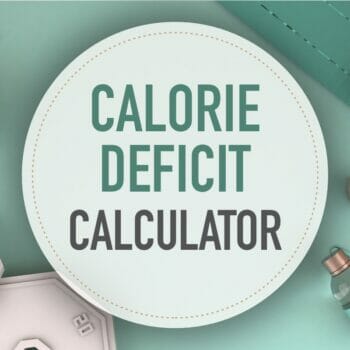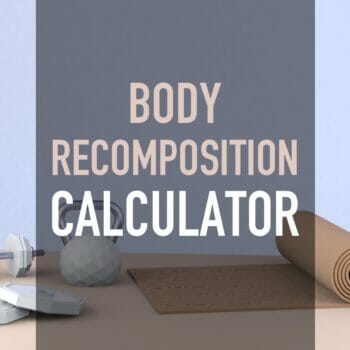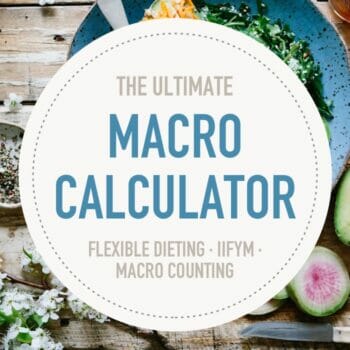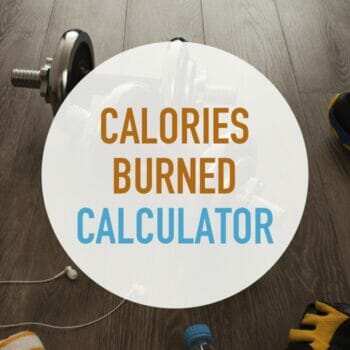Macro Calculator

This free, easy-to-use macro calculator gives you your optimal macronutrients and calories. It serves as a weight loss or muscle gain calculator for both women and men.
Combine with macro counting, flexible dieting, or IIFYM to reach your goals faster.
How to calculate your macros for fat loss
The foods we eat are made up of three macros (macronutrients). These are carbohydrates (carbs), protein, and fat.
Chicken is high in protein but has no carbs; rice is high in carbs but has very little fat or protein.
The three macronutrients provide the body with energy and raw materials for growth and repair.
By calculating the appropriate daily calorie amount for you, we can then break this down into the best macronutrient ratios to achieve weight loss.
The calculator is based on sound science, combined with data from years of coaching hundreds of successful clients.
What is a good macro ratio for fat loss or muscle gain?
Your macros should be based on your Total Daily Energy Expenditure (TDEE) and your goals.
The calculator defaults at the best macro ratio proven to work for most people.
This ratio is:
- 30% fat
- Protein is 0.65 grams per pound of body weight,
- The remainder is carbs.
Depending on your goal, this will be either a calorie deficit or a surplus.
You can go further and make more adjustments: Perhaps you’re an extreme endomorph and do better with fewer carbs. Or perhaps you have one kidney and need to eat less protein.
You can fine-tune your results for you with a bit of math. See how to change your macros here.
MACRO COUNTING
- 140 page step-by-step guide.
- Achieve fat loss without starvation.
- Individually tailored to your body composition.
What is a good protein ratio?
Rather than a percentage, proteins are based on your body weight.
Our calculator has three settings:
- Moderate adjusts the ratio to 0.65 grams per pound of body weight.
This is appropriate for sedentary individuals or people with higher body fat percentages. - High is for active people with moderate strength training and an average body fat percentage.
- Maximum will set the ratio to 1 gram per pound.
This amount is good for bodybuilding and gaining muscle mass. You must be doing intense training.
Find out how to fine-tune your protein ratios when counting macros
Fat macro ratio
Set fat at 30% of daily energy expenditure.
Most people do very well with this amount of fat. See more about choosing the best macro fats. Because of high-fat diets like keto, many people are now eating more fat than they need to.
Carbohydrate macro ratio
Once you’ve calculated protein and fat, the remainder of your daily calories should be from carbohydrates.
Carbs fuel your body and workouts and are the body’s preferred energy source.
If you are coming from a low-carb background, this may seem high. However, according to respected nutritional research, this is a moderate amount of carbs.
If you are eating according to your TDEE, the notion that carbs cause weight gain or stop fat loss is incorrect.
Using as a Calorie Deficit Calculator
As a weight loss calculator, this tool establishes a safe calorie deficit only.
The Lose option puts you in a 20% calorie deficit, promoting safe, steady weight loss.
The best macro ratio for body recomposition
If you want to recompose your body (lose fat and gain muscle simultaneously), then use the body recomposition calculator.
Macro ratio for maintenance
The Maintain button shows you the macro levels to maintain your current weight.
This is great if you have lost weight and don’t want to gain it back.
Macro ratio for muscle gain
The Gain button puts you in a 20% calorie surplus.
The macro breakdown is designed to build muscle fast in conjunction and must be combined with a comprehensive weight training program.
It can also be used by people who are underweight.
TIP: Try starting with the maintenance goal and then gradually increase calories from there if you want lean muscle gains.
Calculating macros using your body fat percentage
The calculator uses your body weight to determine calories and macros.
However, you can obtain superior results by using your body fat percentage. The calculator allows you to choose which method; Normal for body weight, Lean Mass for fat percentage.
When to choose the Lean Mass Formula
If you are lean (have a low body fat percentage), choose the Lean Mass formula, and enter your body fat %.
If you are classified as obese and have a lot of weight to lose, the lean mass formula is superior. You can read more about macro counting and obesity.
Help? Calculate your ideal body weight or get an assessment of your body fat percentage.
Why the difference? Muscle cells burn more calories than fat cells, so the more accurately we measure this, the better your results will be.
How to calculate macros per meal
Once you’ve calculated your daily macros in the calculator, you can break this down into meals.
Choose from 2 to 6 meals per day to see the macro ratio you can track for each meal. For some people, this is easier, but for others, this is too much detail.
Do what works for you.
Meal Plans
See a 5-day macro-based meal plan. It includes three meals and two snacks per day.
Macro calculator activity level settings
A higher activity level means a higher daily calorie goal.
For example – if you maintain your weight at 2,000 calories per day, adding vigorous daily exercise means you need more calories to maintain your weight.
If you are sedentary and trying to lose weight, adding exercise will increase your daily calorie goal.
The idea seems counter-intuitive, but more energy is required to fuel your workouts. More workouts lead to increasing metabolism; therefore, more fat is burned!
Undereating is one of the leading causes of the weight loss plateau.
So many of our clients previously “hit the wall” with dieting. They would continually reduce calories, stop losing fat and gain weight when they eat a little more.
Macro counting defeats this by prescribing the right food and calorie levels.
Which activity level do I choose?
- Sedentary: Just regular everyday activity like a bit of walking, a couple of flights of stairs, eating, etc.
- Light: Any activity that burns an additional 200-400 calories (females) or 250-500 calories (males) over your sedentary amount.
- Moderate: Any activity that burns an additional 400-650 calories (females) or 500-800 calories (males) more than your sedentary amount.
- Extreme: Any activity that burns more than 650 calories (females) or more than 800 calories (males) in addition to your sedentary amount.
Other options for determining your calorie burn
- Use our calories burned calculator – it accurately assesses over 380 activities.
- Use a fitness tracker – like a Fitbit or Apple Watch (note that they can overestimate calorie burn).
- Use a suitable app – like MapMyFitness
Why should I eat more when I exercise more?
High physical activity not fueled with enough calories will lead to muscle catabolism (breakdown of muscle fiber).
This lack of nutrition could stall your weight loss, so eat up if you love to exercise!
I’ve got my macros – now what?
Once you’ve identified your target daily macros, you must determine the macros in all the foods you eat.
By tracking them daily, you can reach your recommended macro targets that encourage fat loss, muscle gain, or whatever your goal may be.
You can learn more about the macro counting system and the flexible dieting philosophy. Many people use an app like Myfitnesspal to track macros.
For more specifics on what to eat – see a sample macro meal plan or a list of macros for familiar foods.
I've helped 14,000+ people lose thousands of pounds by tracking their macros.
Choose either my self-guided program or let me coach you.
Learn how to count macros in under 60 minutes
- Instant download.
- 140+ page ebook + extensive bonuses
- Uncover the techniques my most successful clients use.
References
- Mifflin, M. D., St Jeor, S. T., Hill, L. A., Scott, B. J., Daugherty, S. A., & Koh, Y. O. (1990). A new predictive equation for resting energy expenditure in healthy individuals. The American Journal of Clinical Nutrition, 51 (2), 241-247. Link
- McArdle, W. D., Katch, F. I., & Katch, V. L. (2010). Exercise physiology: nutrition, energy, and human performance. Lippincott Williams & Wilkins. Link
- Jequier, E. (1994). Carbohydrates as a source of energy. The American journal of clinical nutrition, 59(3), 682S-685S.
- Lemon, P. W., Tarnopolsky, M. A., MacDougall, J. D., & Atkinson, S. A. (1992). Protein requirements and muscle mass/strength changes during intensive training in novice bodybuilders. Journal of Applied Physiology, 73(2), 767-775. study abstract link
- Grundy, S. M. (1999). The optimal ratio of fat-to-carbohydrate in the diet. Annual review of nutrition, 19(1), 325-341. abstract
- Conlin, L.A., Aguilar, D.T., Rogers, G.E. et al. Flexible vs. rigid dieting in resistance-trained individuals seeking to optimize their physiques: A randomized controlled trial. J Int Soc Sports Nutr 18, 52 (2021). https://doi.org/10.1186/s12970-021-00452-2
2,067 Comments

 Calorie Deficit Calculator
Calorie Deficit Calculator Body Recomposition Calculator
Body Recomposition Calculator Macro Calculator
Macro Calculator Calories Burned Calculator
Calories Burned Calculator Keto Macro Calculator
Keto Macro Calculator
154.94
Hi , I am 5’9 been working out for 10 years 6 days a week …I never fall below 140lbs.. I am 33 and switch up my workouts every month so I do t plateau. I am trying to break the cycle of 140 and get to 135. I do a half hour to 45 min of cardio after weight lifting . I eat pretty clean and keep calories under 1,000 most of which 60% protein 30% carbs .. any ideas on how to achieve a 5 lb loss … really I am trying to tighten everything .
It looks like your calories are way too low. This has no doubt messed with your metabolism. I would recommend using the calculator to eat what’s healthy for your stats. It may take some time for your body to start responding to a healthier caloric intake.
Yes totally agree, with that amount of cardiovascular and weights, I think you hold calculate your macros and start carb cycling this will slowly increase your metabolism. I find by adding 2 high carb days a week split on training days it works.http://www.fitnessrxwomen.com/nutrition/healthy-eating-tips/carb-cycling-diet-101/
I’m a massage therapist – I work about 20 hours per week doing therapeutic deep tissue massage. My outside-of-work activity includes walking my dog and 3x/ week HIIT mat-based exercises. Should I choose light activity or moderate activity?
That seems moderate to me.
What about if you’re breastfeeding? Do you keep it the same or add back the 500 calories that you are supposed to be decreasing if you want to loss weight
This calculator doesn’t have functionality to calculate breastfeeding nor does it use a simple 500 calorie deduction. I would recommend that you take a look at this calculator. http://freedieting.com/tools/breastfeeding_calorie_calculator.htm
I used that calculator and it says I need 2046 calories, now if I want to loss weight how to I determine how many calories I need/ macros
set it to “lose” at the bottom just before where your results are displayed.
what is your advice on changing macros for days off (ie none lifting days) ? the trainer I am currently working with has me keeping my fats/protein macros the same but has my carbs lowered on days I am not lifting. Is this okay or should I follow the same macro counts every day
I think this is fine especially if on the non lifting days you aren’t doing any exercise.
What if I am doing cardio on my off days from lifting? Should I still keep my carbs lower
no, in that case you should just stick with the same macro levels each day.
Thanks for all of your advice! I appreciate it 🙂
My pleasure!
I’ve done an experiment and put myself and my sister into the calculator. I need to loose weight and she needs to gain. The protein that I need to eat to loose weight is much higher than she needs to gain weight while the carbs for her to gain are a lot higher than those I need to loose. Could you explain?
When you are in a calorie deficit there is danger that your body will begin breaking down your muscles for energy. Eating more protein is believed to prevent this as long as you are keeping your muscles stimulated. When gaining weight more carbs are needed because you want more of the protein you eat to be available for muscle growth and not used for metabolism.
So with the macros in line and following the calories, if you do exercise, should you be eating back those calories you are burning in order to lose weight? Thank you!!! I’m excited to give this a try….
The calories burned during exercise are already factored into the displayed results. You simply select “lose” and then eat accordingly. Good Luck!
Are they factored if I selected sedentary? I don’t work out everyday. About 3 times a week. Lifting and minimal cardio, should I change it to light activity the days I do go to the gym?
No, sedentary means no exercise is being performed so none is factored in. Working out 3 times a week would be considered light activity.
I am 18 and teach body flow 4 times a week, do Pilates for about 3 hrs a week, and some form of cardio for about 1-2 hrs per week. Other than that the rest of my day is not too active. I drive a lot, ETc. I am 5″1.5 and weigh about 104-106. I don’t weigh myself too much… More measure. I used to eat 1200 cal a day and am afraid to eat more… How much should I really be eating though? Does being short mean you should eat less? I would like to be a bit more lean but I keep eating about 1600 cal a day … I am just afraid I’ll be gaining weight and the exercise won’t even matter
It seems like you are at a healthy weight for your height.
see: http://freedieting.com/tools/ideal_body_weight.htm
Your body does gets accustomed to eating the same amount so any changes to this can possibly result in some gain. Perhaps switch up your exercise and do some weight training?
Ok thanks. I seem to be pretty much the same in measurements. But with the type of exercise I do as listed before… Would I be “lightly active”? And would 1600 calories be appropriate or is that something that I’d just have to figure out through trial/time? I have been told 1200 is too low… So it’s kind of confusing.
Yes, I would say that’s lightly active. Give the calculator results a try and see how it goes. Remember that your 1600 calorie level according to the calculator was to maintain your current weight. Also focus more on the macros than the calories.
I’m so confused. The number I got is twice the amount of calories I eat in a day. I eat very well most of the time… Is there something I’m missing out on? I’m trying to lose weight
Let us know your stats so we can check (e.g. height, weight, age, activity).
Hi, my name is Joe. I’m 6’2, 200 pounds. I go to the gym everyday, sometimes twice a day for my cardio, and I work as a cook at a Mexican restaurant. Should I put I’m very active or moderate active??
Hi Joe, about how long are your gym sessions? Does your heart rate stay elevated the entire time or do you take long breaks in between sets?
I work out for about one hour. And I take a two mins rest in between each set.
I would say start with very active and see how you go. If you aren’t reaching your desired goals then cut back to moderate. All the best and keep us posted!
im a bit confused i just used the formulas you gave in the article that led me to this one. and i did the calculator and it ends up being completely different numbers.
The calculator is more accurate because it takes into account your gender, age, height, activity level and weight and gives you a custom calorie deficit. The simple formula on the other page doesn’t account for all of those factors.
Okay thank you very much. great article by the way this helped me so much.
Hey guys, I’m a 17 year old male and underweight at the moment but want to try to gain muscle mass and a six pack should I follow the calculator results if I want to do the INSANITY workout?
I would suspect that Insanity might be a bit out of the scope of the exercise intensity setting of the calculator. You may need to add some additional carbs. Does Insanity publish how many calories their workouts burn?
Up to 1000 calories as what they stated.
Exactly what I thought. Yeah that would be out of the calculators range for intense exercise. You’ll need to eat more.